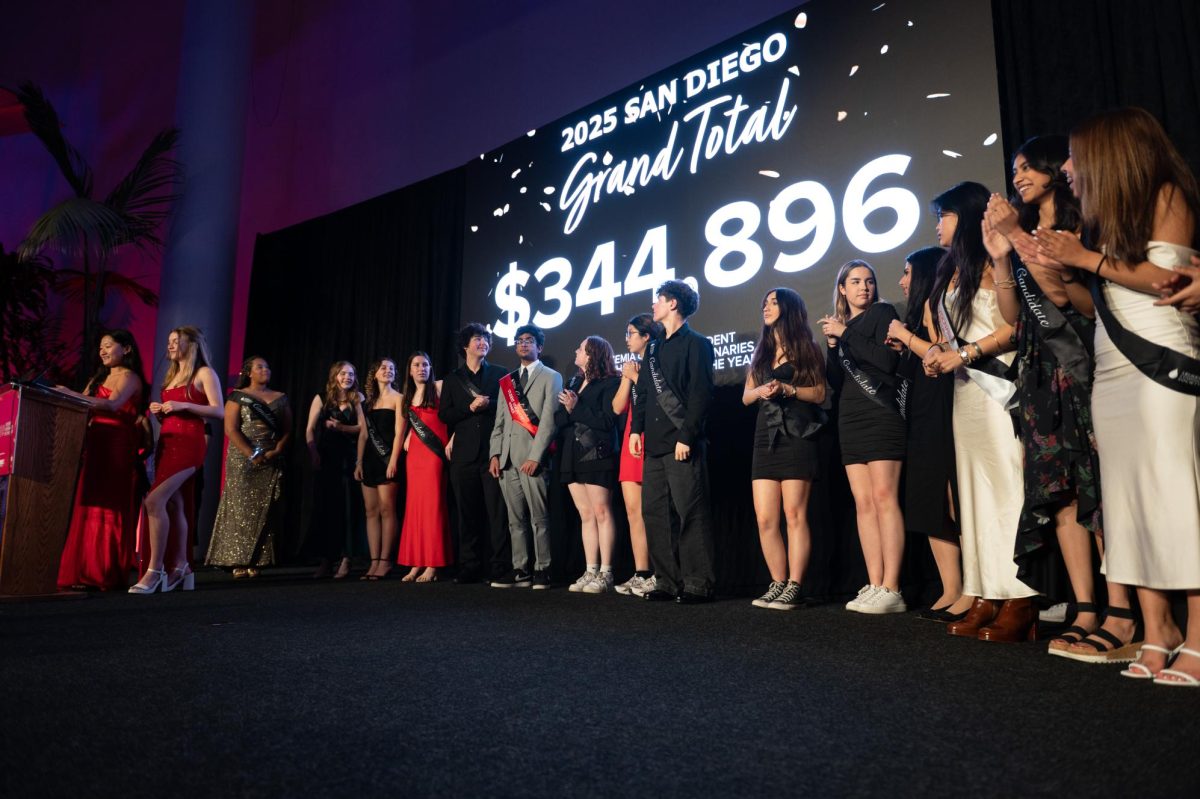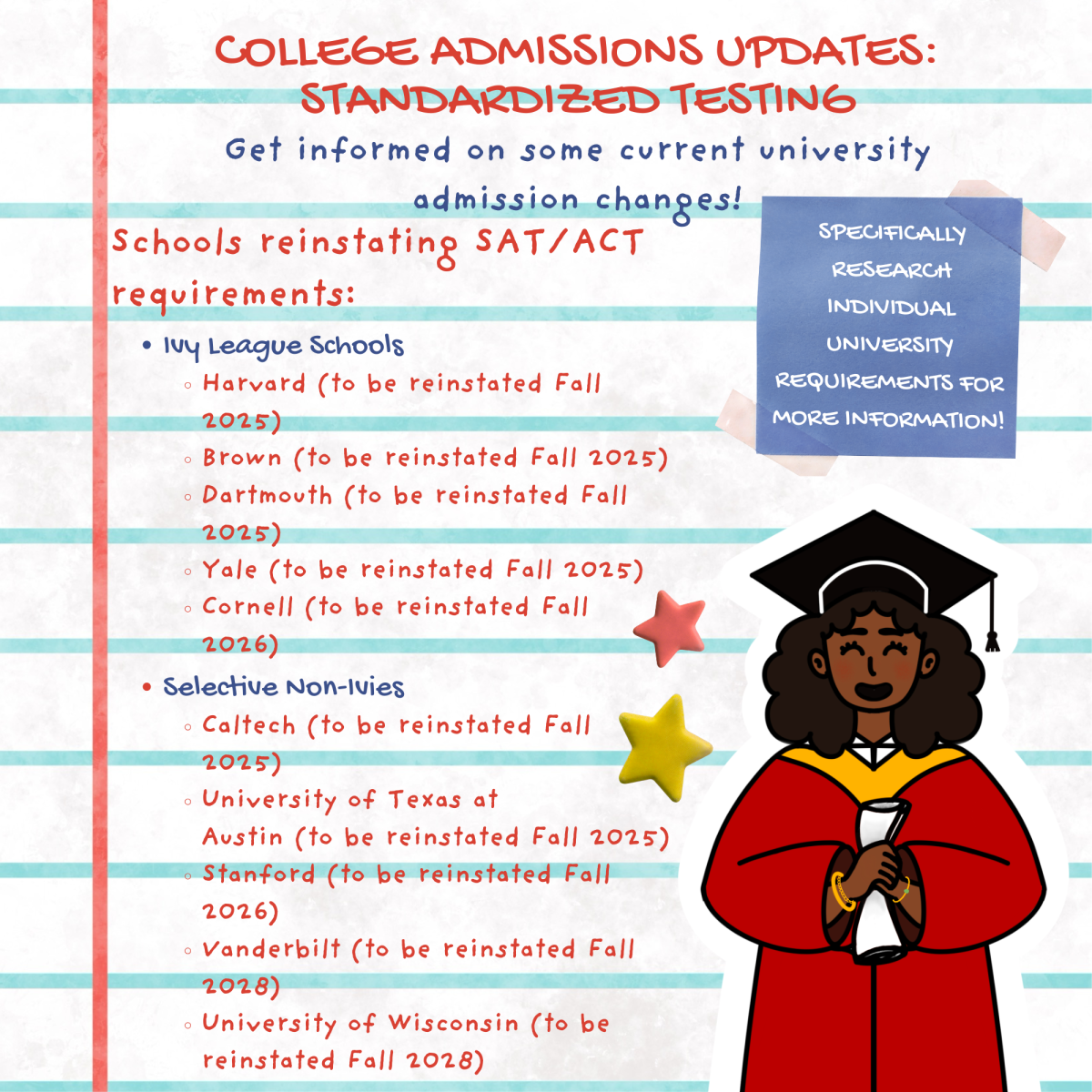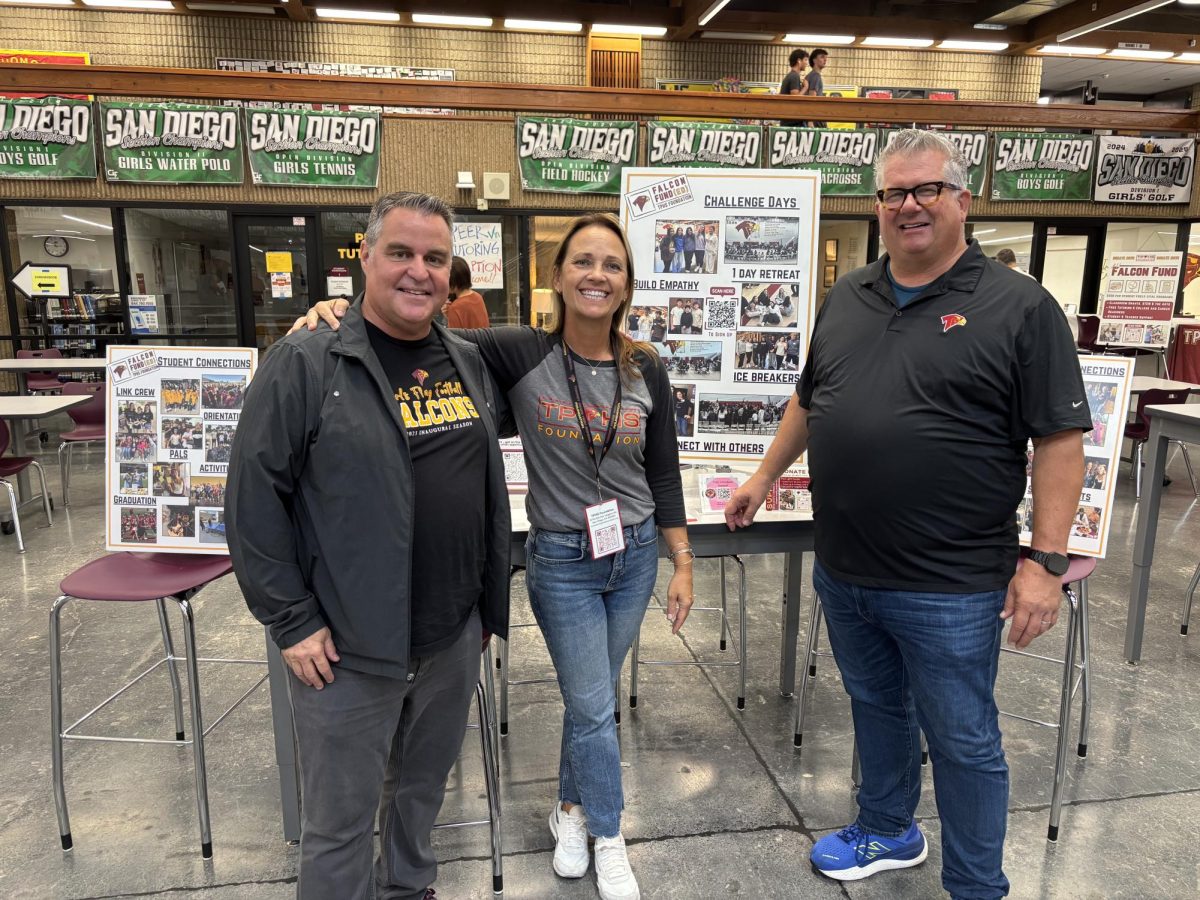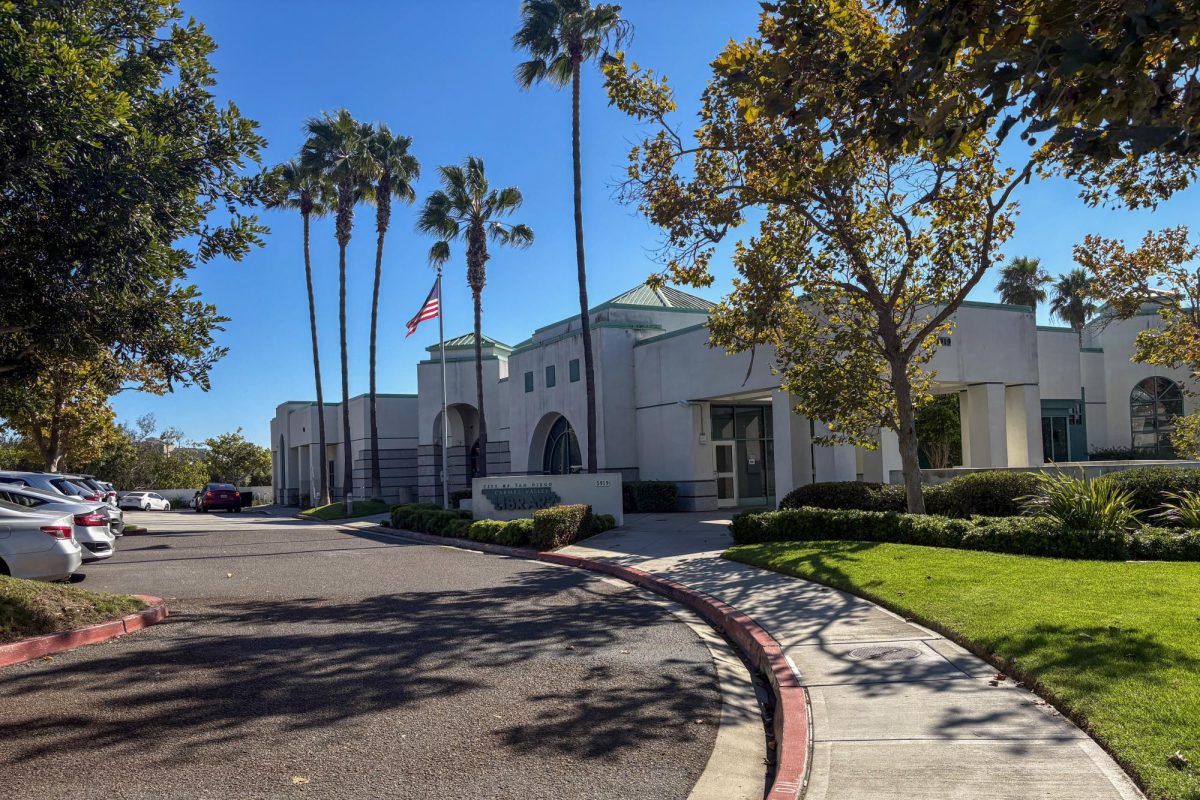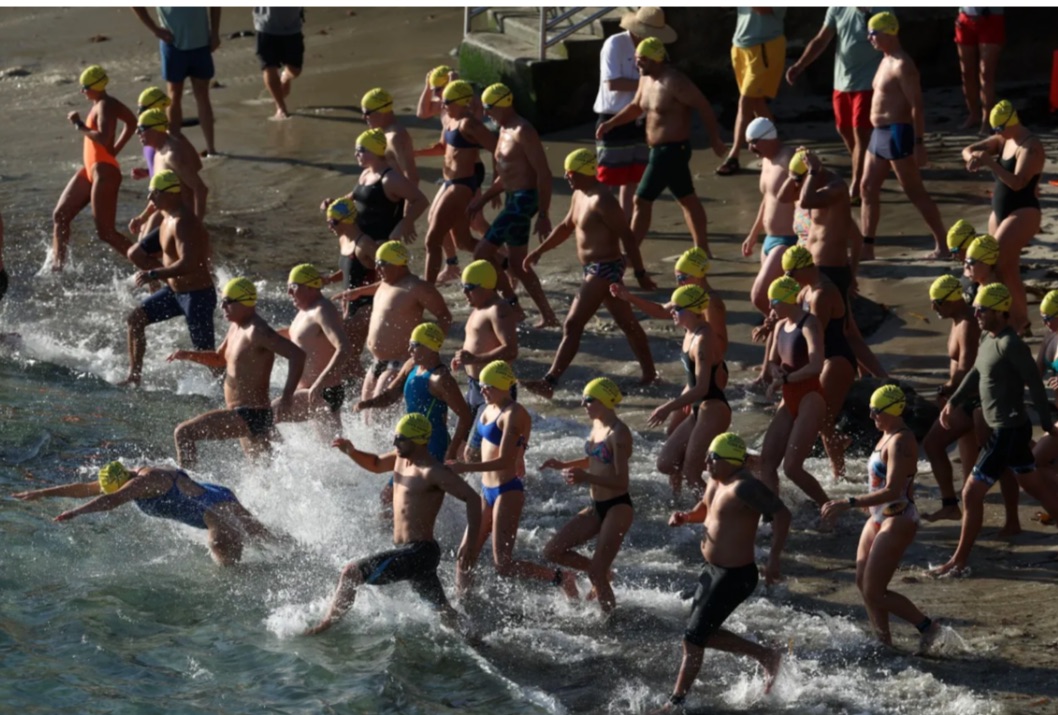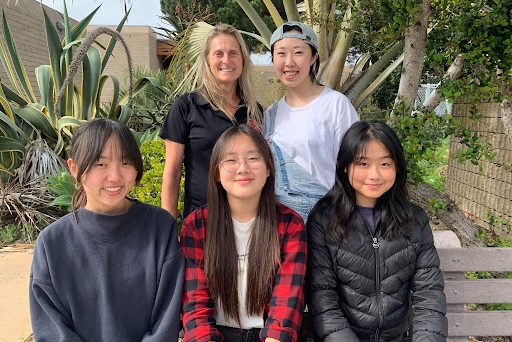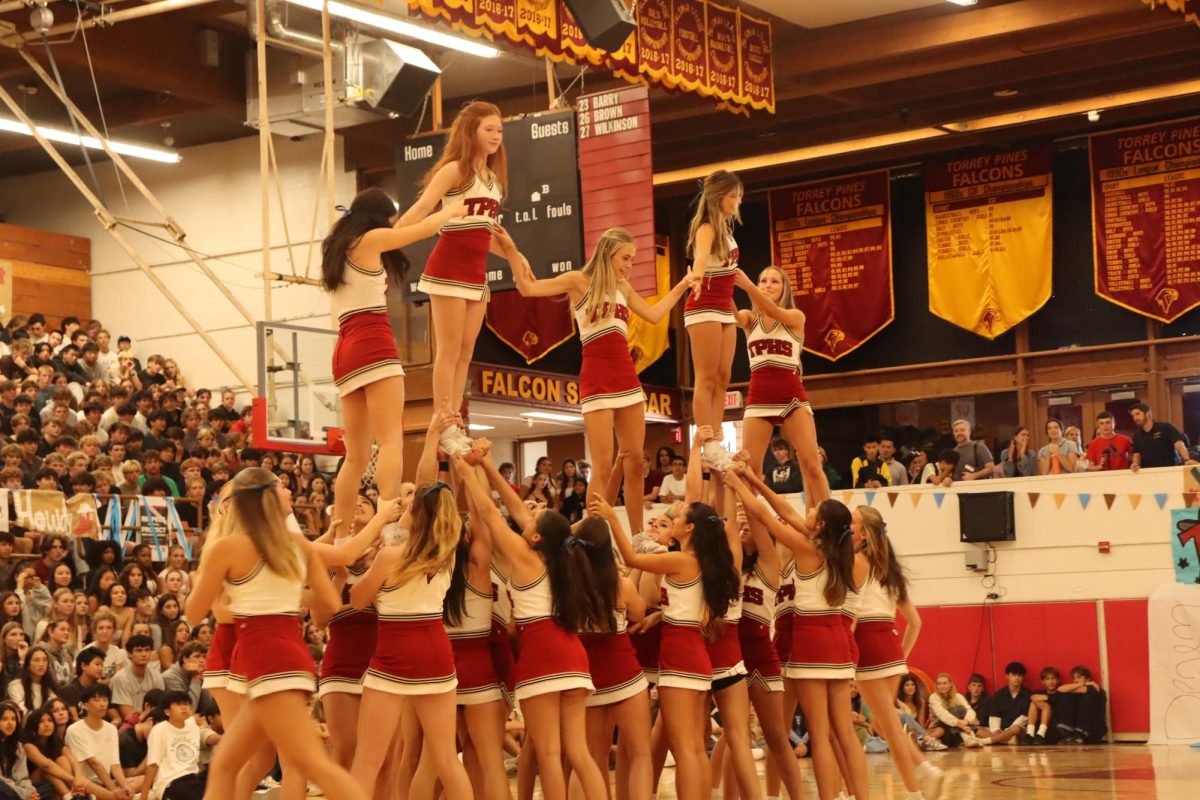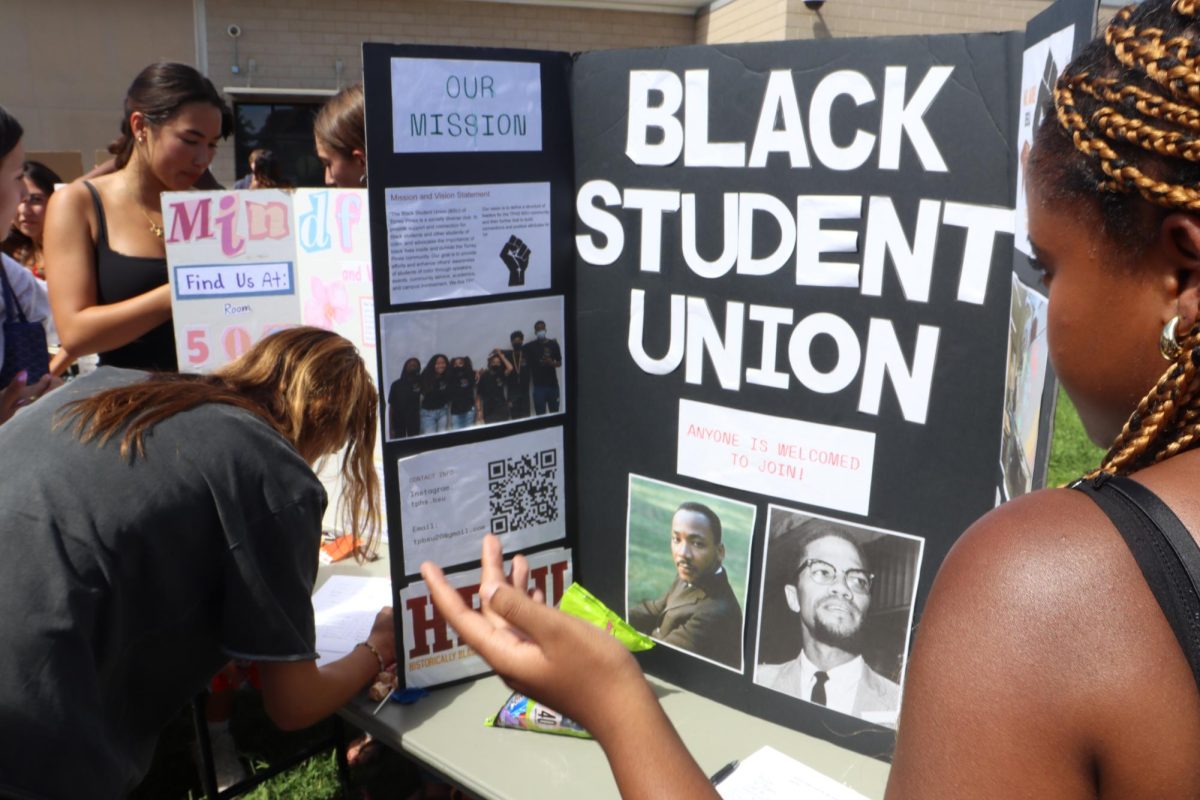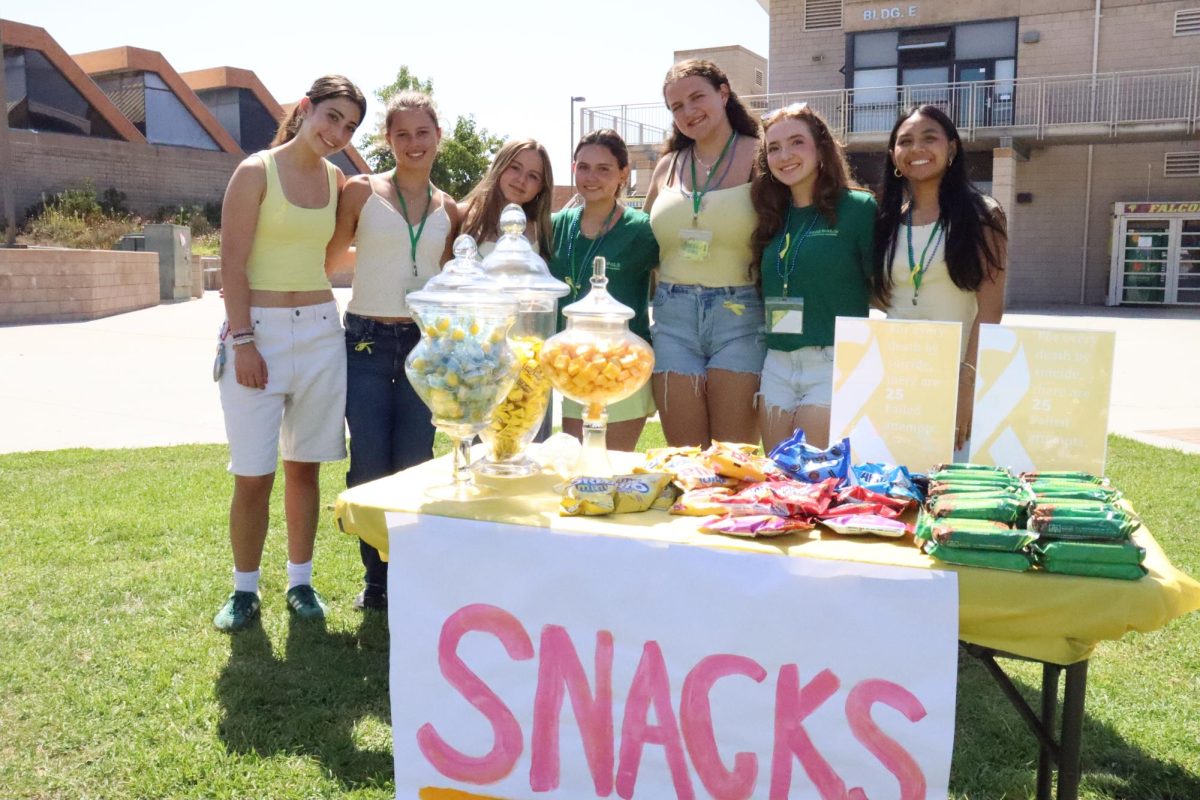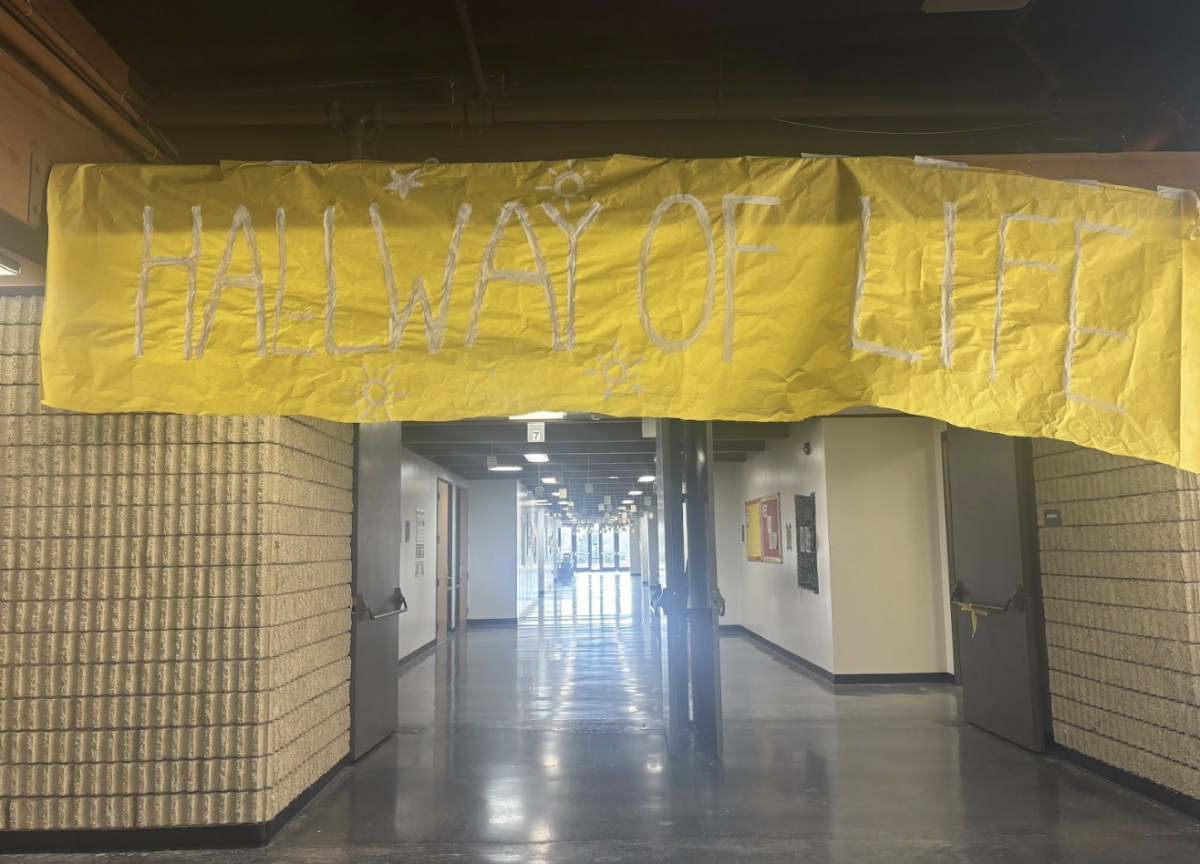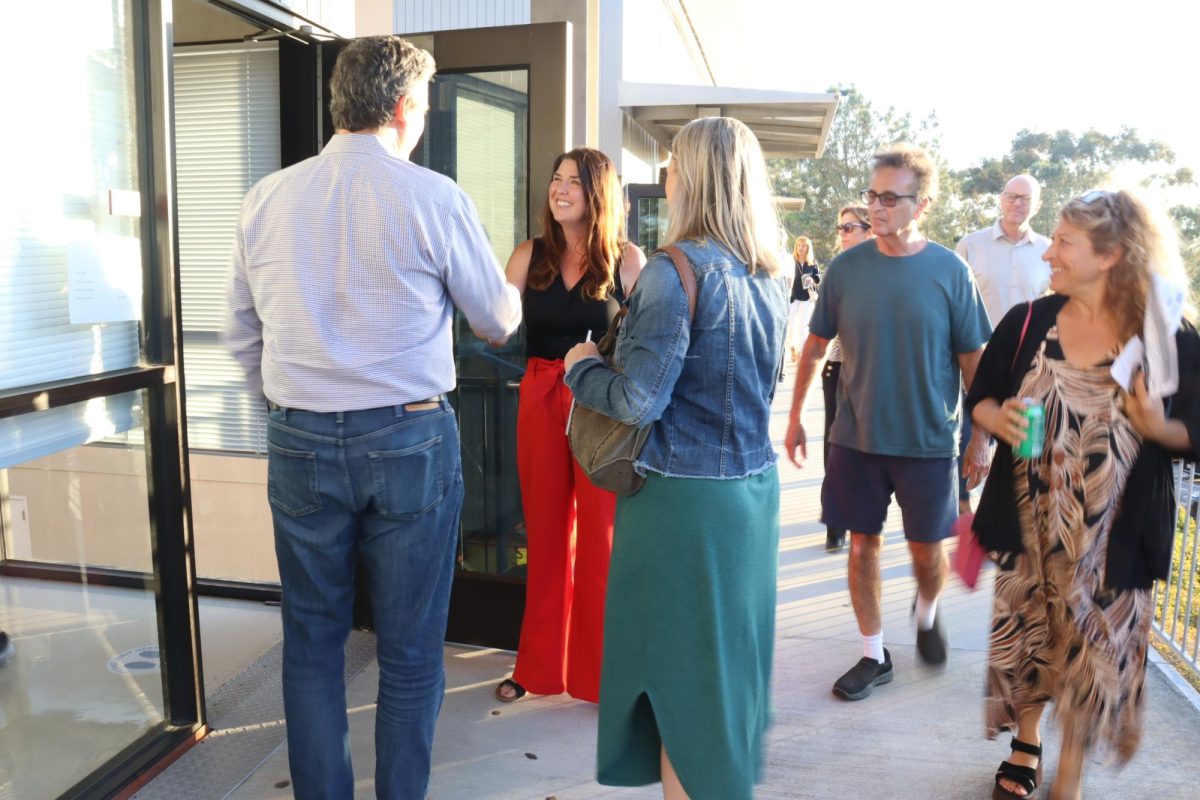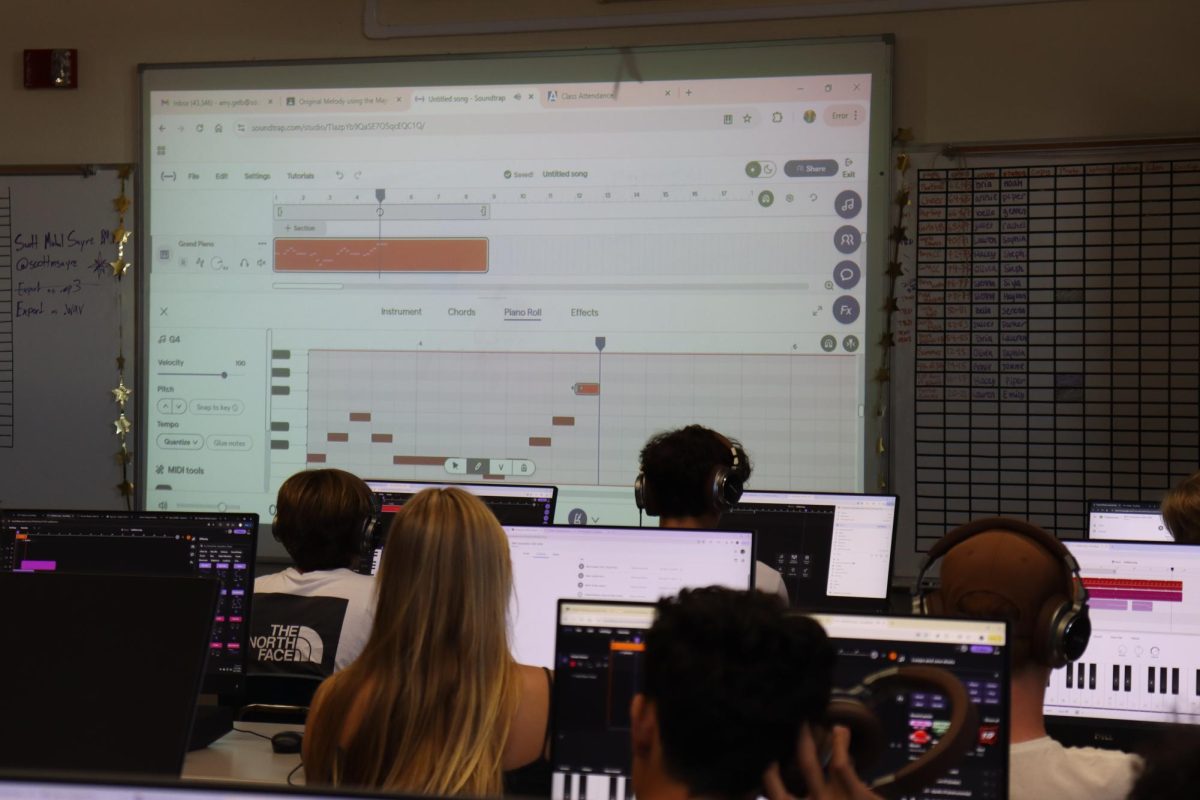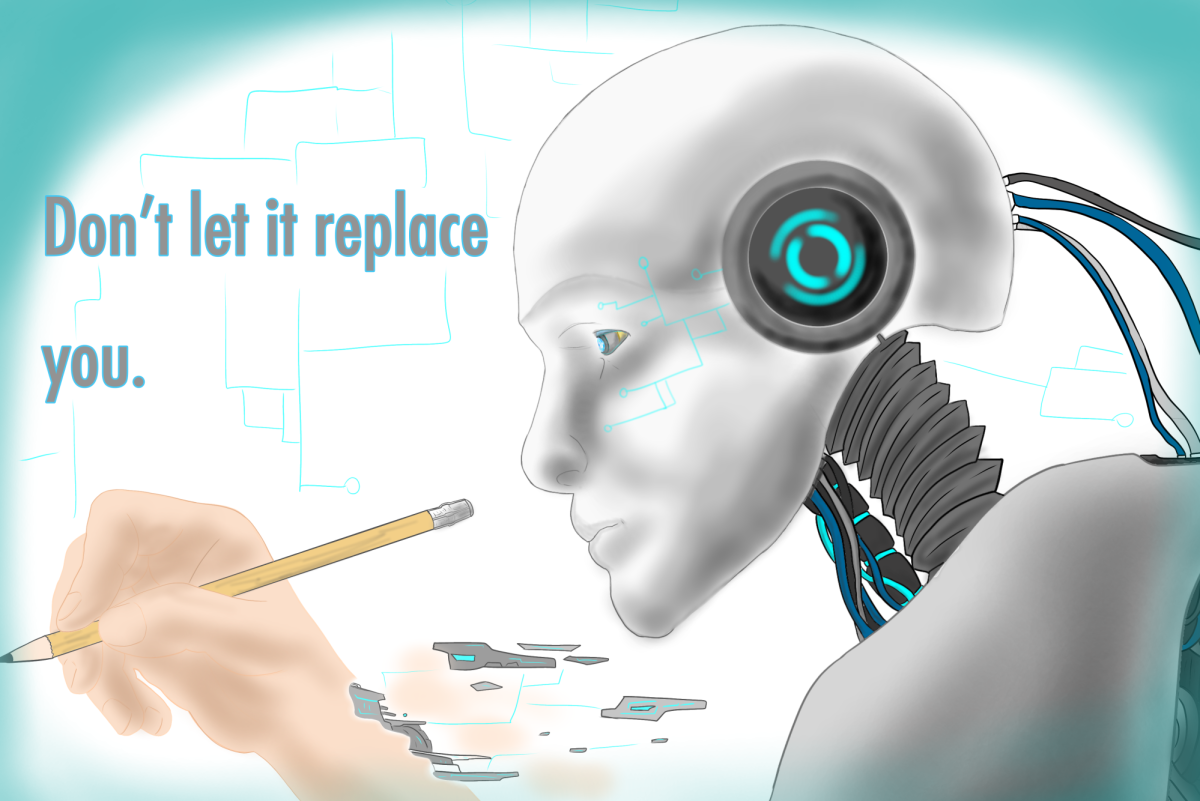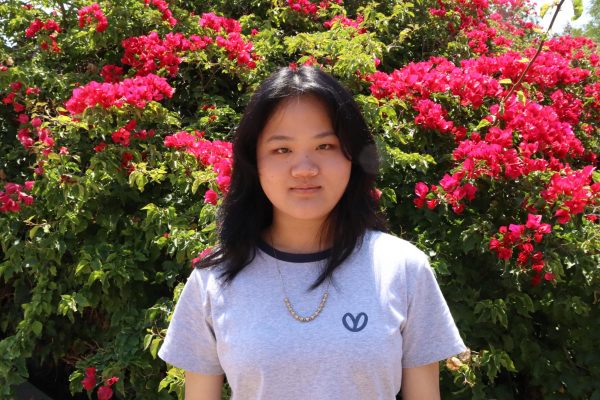Blood Cancer United continues to recruit San Diego high-school students for its Student Visionaries of the Year program, as September marks Blood Cancer Awareness Month.
In Student Visionaries of the Year, students from across San Diego County form teams to raise money, contributing to the fight against blood cancer. The seven-week program officially begins in January, when students launch their fundraising campaigns.
“So it is a collective San Diego effort with high school teams, but it’s also like a blind competition between teams, where they are competing to raise as much money as they can,” Meghan Koos, San Diego Leadership Committee Chair, said.
Student Visionary of the Year is accepting candidate applications through the end of October. According to Koos, the program has at least 10 years of history, with the first team from Torrey Pines joining in 2017.
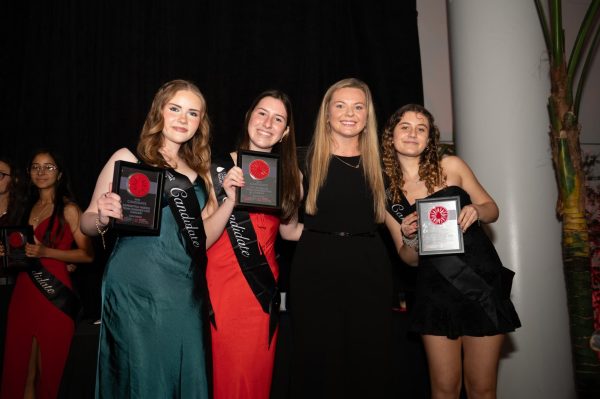
San Diego Student Visionaries of the YearCampaign Development Manager Cassidy Hannula, TPHS student Ailee Almog (11). Team Answer for Cancer poses for the camera. This was shot at last years Gala when they revealed the total amount funded. Photo courtesy of Blood Cancer United (Sarina Feng)
“We’ve had one pretty consistently every year since then, except for 2020, which a lot of things were challenging then,” Koos said.
Candidates Ailee Almog (11) and Lily Johnson (11), along with their co-candidate from Rancho Bernardo High School, lead Team Answer for Cancer and are returning this year after raising $40,000 in last year’s campaign.
“Honestly, we didn’t even think we were gonna raise $10,000 at the beginning of the thing,” Johnson said. “And then, we raised 40,000, which honestly was incredible. I think just surpassing our expectations was really amazing.”
Methods of fundraising include personal asks, sponsorships, corporate deals and community events. In their last campaign, Team Answer for Cancer sent out fundraising pages and emails, held raffles and events with silent auctions and motivated members through various challenges.
“It depends on the team about how they want to approach it, but they are basically doing whatever they can to raise funds,” Koos said.
Teams are already preparing for the campaign by meeting with team members, preparing materials and planning events.
“Always the strategy with a campaign like this is to prepare as soon as possible,” Almog said.
Almog’s grandpa, funded by Blood Cancer United, developed cladribine, a drug for the treatment of hairy cell leukemia. Almog is motivated by the fact that the money they raise can go to research, funding doctors like her grandfather.
“With all the new technologies that are developing, there should be more funding for this and more research going on so that cures can be found as soon as possible, because [there are] so many deaths,” Almog said.
Students felt like they not only gained leadership skills and confidence, but also new perspectives and knowledge.
“When I was researching, I found out [organizations] have so many support services for people who have been diagnosed with cancer, like nutritionists and doctors and websites that can help so much,” Johnson said. “This is a tangible way for teenagers to get involved, and actually see the difference that they’re making. It’s an awesome program.”
The program culminates in the gala, or grand finale, in March, in which the total amount of money raised by San Diego students is unveiled, and students are able to meet an individual in the community who has experienced blood cancer.
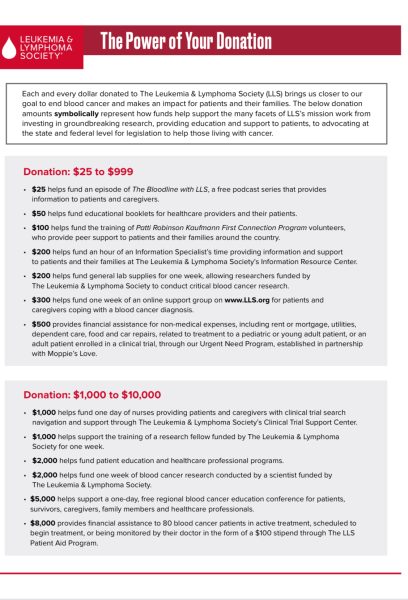
“That is just always such a momentous event, because you have all these students coming from all over and they’ve been working so hard, and it’s a celebration of them and this fight,” Koos said.
Johnson found the gala to be one of the most rewarding parts.
“The craziest thing is when it’s the end of the campaign and we get to see how much money all of the teams raised together,” Johnson said, “Because yes, it’s a competition and so you’re kind of focused on yourself, but at the end, everyone kind of comes together and you see, together we raised hundreds of thousands of dollars … to raise that amount of money, that can really do so much.”
Money raised by students can go towards 3 main pillars: Education & Support, Policy & Advocacy or Research.
“There’s all these different ways that the money can be used, but we have to raise the money for that to happen,” Koos said. “And I think especially just knowing that there’s a lot of cuts in funding all around, it’s particularly important that we kind of double down and keep going.”
Donations of just $25 can already make an impact.
“We’re making so much progress, but there’s still so much work to be done,” Koos said. “So one of the like statistics that stands out to me is we had, like, 45% of cancer patients abandon their treatment when out of pocket, cost is over $2,000 and that’s just horrifying, that is the sad reality. And so part of what Blood Cancer United does is raise funds so that this doesn’t have to be the case, so people can get the access to the care that they need.”
Formerly known as Leukemia and Lymphoma Society, the organization rebranded in late August as Blood Cancer United to reflect its resources and efforts toward all types of blood cancers. The change was made to “be a more inclusive brand in the fight against blood cancer,” according to Koos.
As Leadership Committee Chair, Koos’s role regards community involvement.
“Part of that means I build out a leadership committee of community members, and these are people who are committed to ending blood cancer, who are here to support our students in their campaigns, whether that’s through mentorship or connecting them to opportunities, that sort of thing,” Koos said.
Koos hopes that this year, committee members will work more “one-on-one” with students, as this is the first year the program will have a “robust Leadership Committee.”
During this period before 2026 campaigns begin, Blood Cancer United continues to organize events, including the Light The Night events. In San Diego the Light The Night event and walk will take place on Nov. 1.
For Koos, the success of this program comes from how students “bring a lot of amazing traits, and then they’re also growing and developing through this experience as well.”
“One thing about high school students in particular is just like the incredible optimism that so many students have, and just the belief that this is possible,” Koos said. “They’re very big go-getters, you know, whereas a lot of people in their life have been told no about certain things, I feel like high school students are like, ‘You know what? This is possible. Why not? Why not reach out to this business? Why not do this?’ And so that’s something that’s very inspiring to me, and something that I think is unique to students.”


